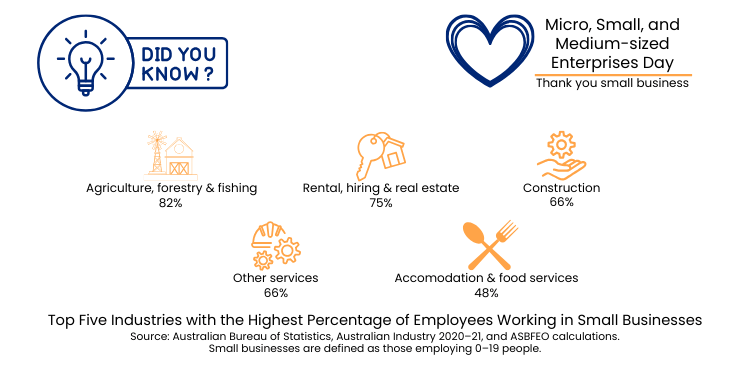Guide to Launching a Business in Australia

Share this guide
Starting a business in Australia is an exciting venture, but it requires careful planning and execution. In 2018, there were over 1,400 start up businesses in Australia. Whether you’re launching a small startup or a larger enterprise, following a structured approach can set you up for success. As per this article from ‘Inside Small Business’, more than 60% of small businesses fail within their first 3 years.
This guide outlines 10 essential steps to help you navigate the process of starting a business in Australia, tailored to aspiring entrepreneurs, to help you avoid the pitfalls.
1. Conduct Market Research
Understanding your market is the foundation of a successful business. Research your target audience, competitors, and industry trends to validate your idea. Identify customer needs, assess demand, and analyse competitors’ strengths and weaknesses. For example, if you’re planning to open a café, investigate local consumer preferences and existing competitors in the area.
Resources: Use tools like IBISWorld for industry reports or Australian Bureau of Statistics for demographic data to inform your research.
2. Develop a Business Plan
A well-crafted business plan serves as a roadmap for your venture. It should include your business goals, target market, competitive analysis, marketing strategy, operational plan, and financial projections. A clear plan helps you stay focused and attracts potential investors or lenders.
Resources: Access templates from Business.gov.au to create a comprehensive business plan.
3. Assess Your Finances
Evaluate your financial resources to determine how you’ll fund your business. Calculate startup costs, including equipment, inventory, and marketing expenses. Explore funding options such as personal savings, loans, or investors. Create a budget to manage cash flow and ensure sustainability.
Resources: Visit Business.gov.au for guidance on financial planning and funding options.
4. Choose a Business Structure
Selecting the right business structure impacts your taxes, liability, and operations. Common structures in Australia include sole trader, partnership, company, and trust. Each has unique benefits and obligations, so research which suits your goals. For instance, a sole trader is simple but offers less liability protection than a company.
Resources: Learn more about business structures at Business.gov.au.
5. Register Your Business
Once you’ve chosen a structure, register your business with the Australian Securities and Investments Commission (ASIC). Obtain an Australian Business Number (ABN) and, if applicable, register your business name. If your turnover exceeds $75,000 annually, you’ll also need to register for Goods and Services Tax (GST).
Resources: Register your business name via ASIC and apply for an ABN at ABR.gov.au.
6. Understand Tax Obligations
Complying with tax requirements is critical. Register with the Australian Taxation Office (ATO) for taxes like GST, Pay As You Go (PAYG) withholding for employees, and income tax. Keep accurate records to avoid penalties and ensure smooth reporting.
Resources: Explore tax obligations at ATO.gov.au.
7. Secure Licenses and Permits
Depending on your industry, you may need specific licenses or permits. For example, a restaurant requires food safety certifications, while a construction business may need trade licenses. Check local, state, and federal requirements to ensure compliance.
Resources: Find relevant licenses at Business.gov.au.
8. Open a Business Bank Account
Separating personal and business finances is essential for clarity and compliance. Open a dedicated business bank account to manage income, expenses, and taxes. This simplifies bookkeeping and enhances professionalism when dealing with clients or suppliers.
Resources: Compare business banking options at Canstar.
9. Protect Your Business with Insurance
Insurance safeguards your business against risks like property damage, liability, or employee injuries. Common policies include public liability insurance, professional indemnity insurance, and workers’ compensation (if you have employees). Assess your needs based on your industry and operations.
Resources: Learn about insurance options at Business.gov.au.
10. Build Your Team
Hiring the right people is key to your business’s success. Define roles, create job descriptions, and use platforms like Indeed to recruit talent. Ensure compliance with employment laws, including fair work conditions and superannuation contributions.
Resources: Post job listings and find candidates at Indeed.
Final Thoughts
Launching a business in Australia requires careful planning, from researching your market to securing the right licenses and building a strong team. By following these 10 steps, you can establish a solid foundation for your venture. For additional support, explore resources like Business.gov.au and ATO.gov.au to ensure compliance and growth.
